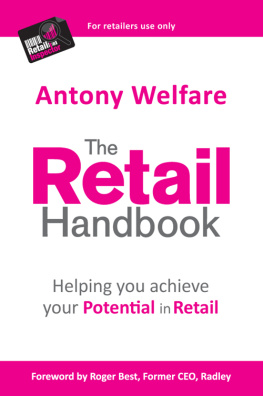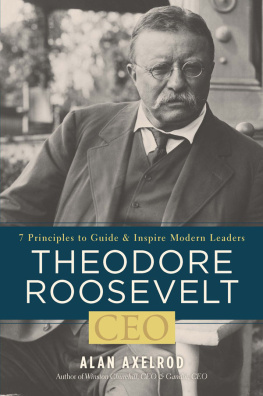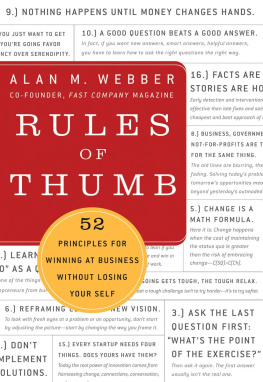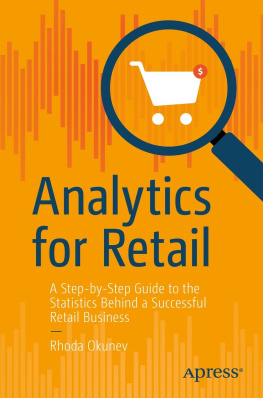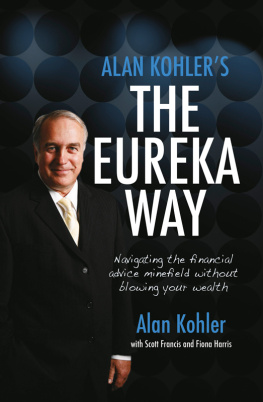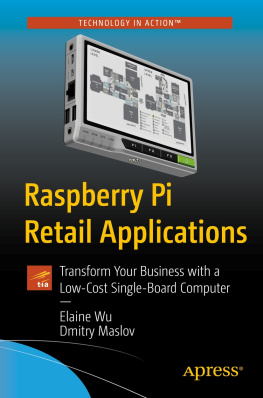Alan Treadgold - Navigating the New Retail Landscape: A Guide for Business Leaders
Here you can read online Alan Treadgold - Navigating the New Retail Landscape: A Guide for Business Leaders full text of the book (entire story) in english for free. Download pdf and epub, get meaning, cover and reviews about this ebook. year: 2020, publisher: OUP Premium, genre: Romance novel. Description of the work, (preface) as well as reviews are available. Best literature library LitArk.com created for fans of good reading and offers a wide selection of genres:
Romance novel
Science fiction
Adventure
Detective
Science
History
Home and family
Prose
Art
Politics
Computer
Non-fiction
Religion
Business
Children
Humor
Choose a favorite category and find really read worthwhile books. Enjoy immersion in the world of imagination, feel the emotions of the characters or learn something new for yourself, make an fascinating discovery.
- Book:Navigating the New Retail Landscape: A Guide for Business Leaders
- Author:
- Publisher:OUP Premium
- Genre:
- Year:2020
- Rating:5 / 5
- Favourites:Add to favourites
- Your mark:
- 100
- 1
- 2
- 3
- 4
- 5
Navigating the New Retail Landscape: A Guide for Business Leaders: summary, description and annotation
We offer to read an annotation, description, summary or preface (depends on what the author of the book "Navigating the New Retail Landscape: A Guide for Business Leaders" wrote himself). If you haven't found the necessary information about the book — write in the comments, we will try to find it.
Alan Treadgold: author's other books
Who wrote Navigating the New Retail Landscape: A Guide for Business Leaders? Find out the surname, the name of the author of the book and a list of all author's works by series.
Navigating the New Retail Landscape: A Guide for Business Leaders — read online for free the complete book (whole text) full work
Below is the text of the book, divided by pages. System saving the place of the last page read, allows you to conveniently read the book "Navigating the New Retail Landscape: A Guide for Business Leaders" online for free, without having to search again every time where you left off. Put a bookmark, and you can go to the page where you finished reading at any time.
Font size:
Interval:
Bookmark:


Great Clarendon Street, Oxford, OX2 6DP, United Kingdom
Oxford University Press is a department of the University of Oxford. It furthers the Universitys objective of excellence in research, scholarship, and education by publishing worldwide. Oxford is a registered trade mark of Oxford University Press in the UK and in certain other countries
Alan Treadgold and Jonathan Reynolds 2021
The moral rights of the authors have been asserted
Second Edition published in 2021
Impression: 1
All rights reserved. No part of this publication may be reproduced, stored in a retrieval system, or transmitted, in any form or by any means, without the prior permission in writing of Oxford University Press, or as expressly permitted by law, by licence or under terms agreed with the appropriate reprographics rights organization. Enquiries concerning reproduction outside the scope of the above should be sent to the Rights Department, Oxford University Press, at the address above
You must not circulate this work in any other form and you must impose this same condition on any acquirer
Published in the United States of America by Oxford University Press
198 Madison Avenue, New York, NY 10016, United States of America
British Library Cataloguing in Publication Data
Data available
Library of Congress Control Number: 2020937530
ISBN 9780198868767
ebook ISBN 9780192639417
DOI: 10.1093/oso/9780198868767.001.0001
Printed and bound by
CPI Group (UK) Ltd, Croydon, CR0 4YY
Links to third party websites are provided by Oxford in good faith and for information only. Oxford disclaims any responsibility for the materials contained in any third party website referenced in this work.
In one sense this book began over twenty-five years ago when we first started working together. Our early interests then in themes of change in global retail landscapes and the transformative role of technology for retailing and retail enterprises find expression in this book, albeit in ways we could never have anticipated a quarter of a century ago. In another sense it began around ten years ago when, independently and in very different roles and geographies, we were researching, discussing, presenting, and refining several of the themes in this book. In a more formal sense, it began around five years ago when we committed to writing the first edition of this book. This, the second edition, was written shortly before and during the COVID-19 global pandemic.
Along our trajectory, both short and long, many, many people haveoften without their knowing ithelped to frame, reframe, critique and finesse the themes in our book through their exposure to and feedback on earlier versions of them in executive education sessions, workshops, conference presentations, and discussions. We thank them all. Several of our friends and colleagues of long standing have helped greatly to bring this book to fruition by both their enthusiasm for our initial idea and their support along the way, especially in diligently reviewing earlier drafts and fearlessly suggesting how we could make them better. In this regard we are particularly indebted to Simon Brodie, Robert Clark, Alan Giles, and Elizabeth Howard. Many executives in retail businesses have been instrumental in the development of our thinking through their willingness to share with us their perspectives and experiences and it is thanks to them that we have had the good fortune to be able to fully revise this second edition.
We are grateful to Oxford University Press for their enthusiasm to publish both editions of our book and for their friendly professionalism and support to us in doing so. We are especially indebted to our editors for both editions at OUP: for the first, David Musson and Clare Kennedy, and for the second Adam Swallow and Jenny King. We are also particularly grateful to Kathryn Rankin who, as the research assistant on this second edition, has supported our various requests so patiently, efficiently, and effectively. Despite all the help and guidance we have received from so many, it seems unlikely that some inaccuracies and misrepresentations will not have crept unobserved into our work. We ask forgiveness and, as ever, the fault is ours alone.
.
A central defining proposition frames the rationale for and the content of this book: namely that the retail industry globally is in the early stages of a transformation that will be more profound and far-reaching than any which has gone before.
A bold assertion? Certainly. Over the last 200 years or more, the retail industry globally has experienced a series of changes which have transformed the sector or large parts of it: the earliest formalization of retailing from market-based to store-based activities, the transformation of grocery stores from serviced to self-service environments, the rise of integrated shopping malls (often in locations away from traditional town and city centres), and the application of technology within retail enterprises and across supply chains used by firms to manage their operations. All of these changes have had transformative impacts on the retail sector. But none of these developments changed the fundamental character of the retailing sector or challenged the essential nature of what it means to be a retail enterprise. At the end of each of these phases of change, retailing was still a store-based activity (only the nature of the stores had changed); retailing was still conducted by retail enterprises (only the nature of the enterprises had changed), and geography still constrained choice (shoppers still needed to visit stores).
Today we are in the early stages of an entirely new landscape of retailing. What is so very different and so disruptive is that the very fundamentals of what it means to be a retailer and what the act of retailing is are being challenged and changed totally. No longer is it a prerequisite to have stores in order to be in the business of retailing. No longer are shoppers constrained by geography and their choice set limited only to those physical stores which they can access locally. Neither is it automatic that a traditional retail enterprise is the onlyor even the most effectivetype of enterprise to fulfil the needs of shoppers, as other enterprises such as consumer goods, logistics, media, and payment companies successfully establish direct relationships with shoppers. Nor does transformative disruption stop here. Entirely new kinds of enterprises are engaging directly with shoppers. These range from search engine firms to social media networks; from price comparison websites to online marketplaces; and from mobile phone and network providers to software engineers. In so doing these new intermediaries disintermediate othersincluding traditional retail enterprises.
The impact of the COVID-19 global pandemic adds additional layers of complexity and uncertainty to this new retail landscape. The combined health and economic crises that have been precipitated are of global scale and impact. They have served to accelerate trends that were already significantly dynamic. They have changed shopper behaviours in ways that were not anticipated. They have led to existential threats to some retail businesses which had hoped that they would have a longer period during which to successfully transform their strategy and organization to better align with and anticipate the needs and wants of their customers.
Font size:
Interval:
Bookmark:
Similar books «Navigating the New Retail Landscape: A Guide for Business Leaders»
Look at similar books to Navigating the New Retail Landscape: A Guide for Business Leaders. We have selected literature similar in name and meaning in the hope of providing readers with more options to find new, interesting, not yet read works.
Discussion, reviews of the book Navigating the New Retail Landscape: A Guide for Business Leaders and just readers' own opinions. Leave your comments, write what you think about the work, its meaning or the main characters. Specify what exactly you liked and what you didn't like, and why you think so.




